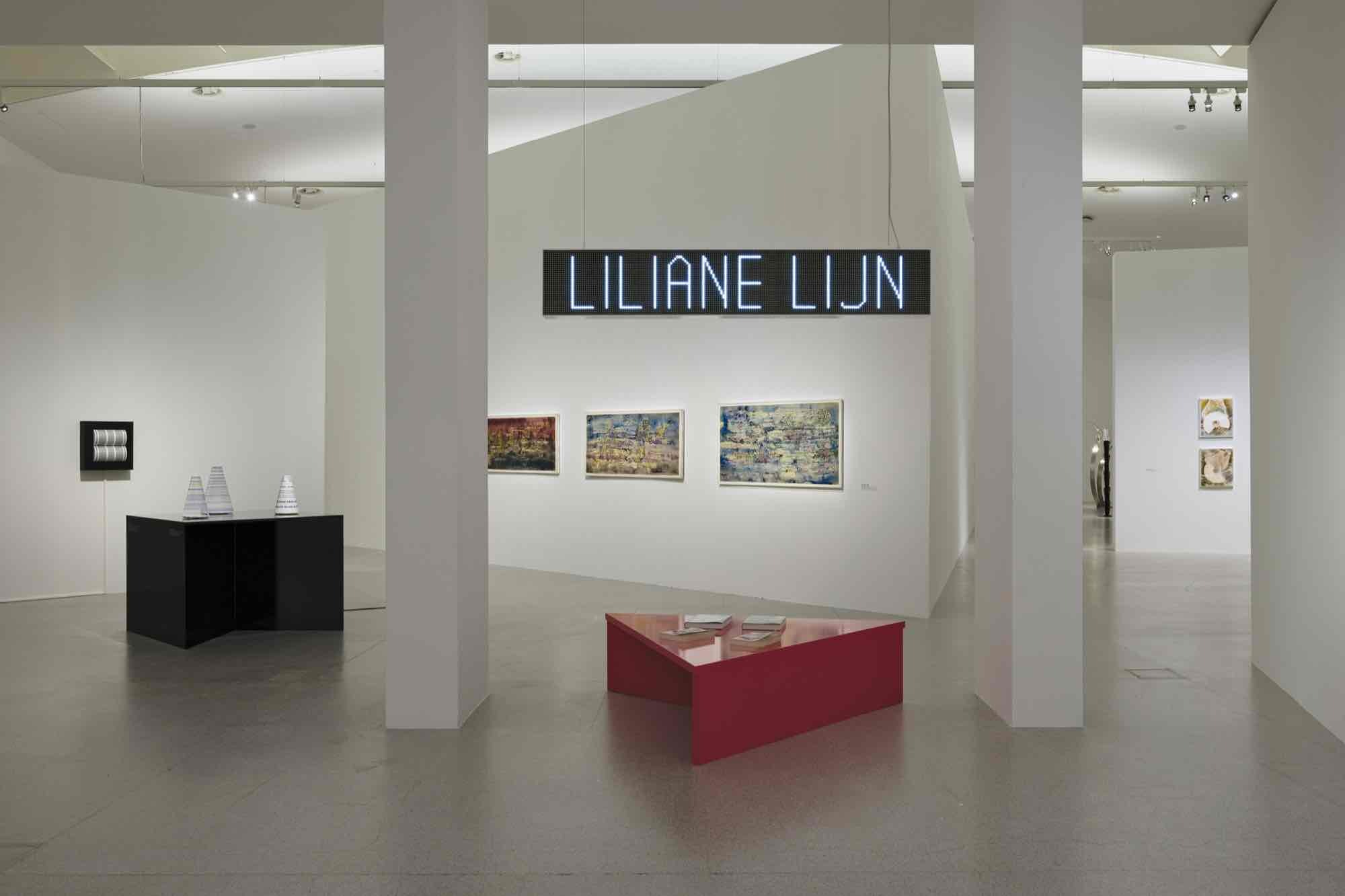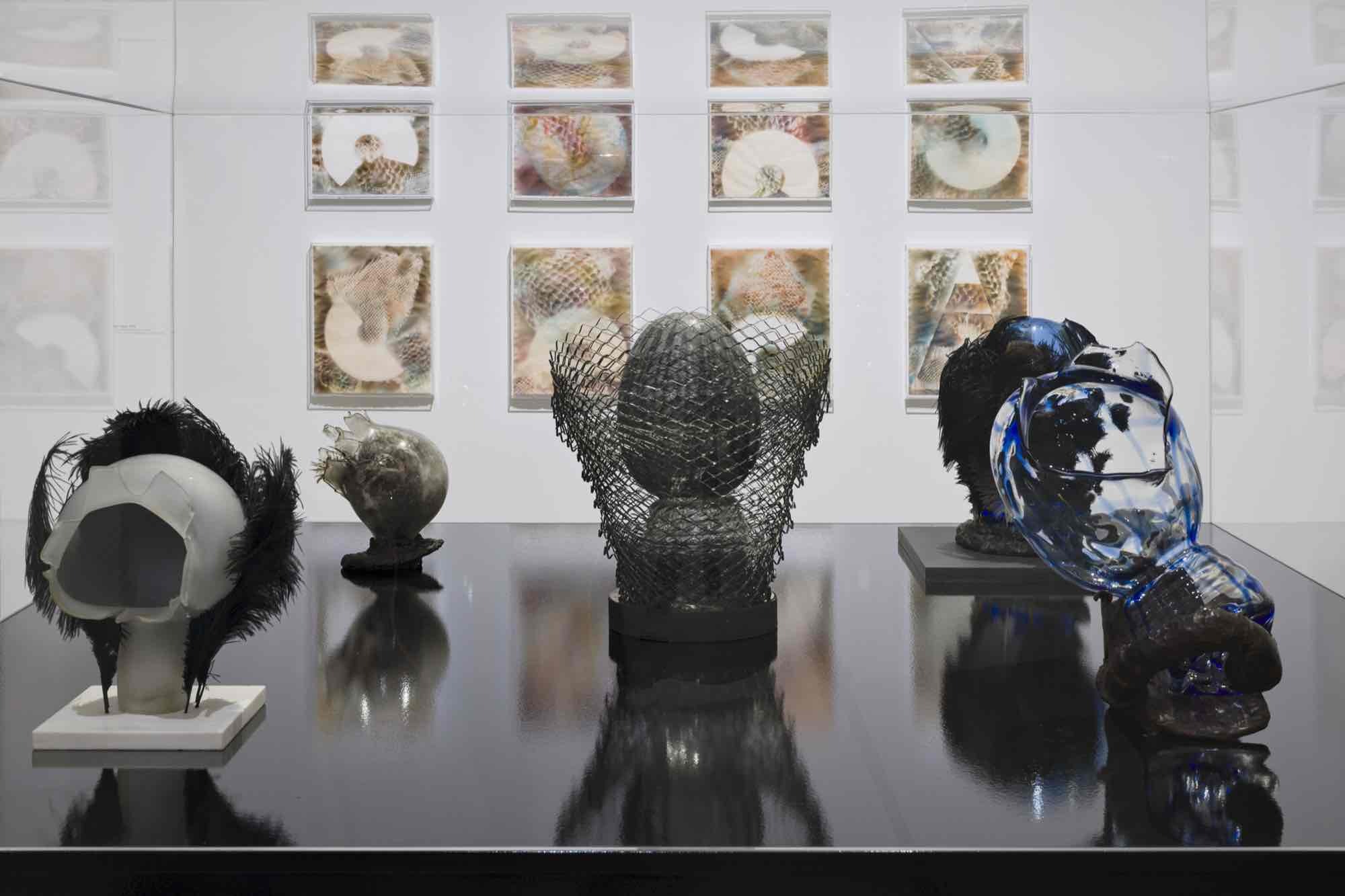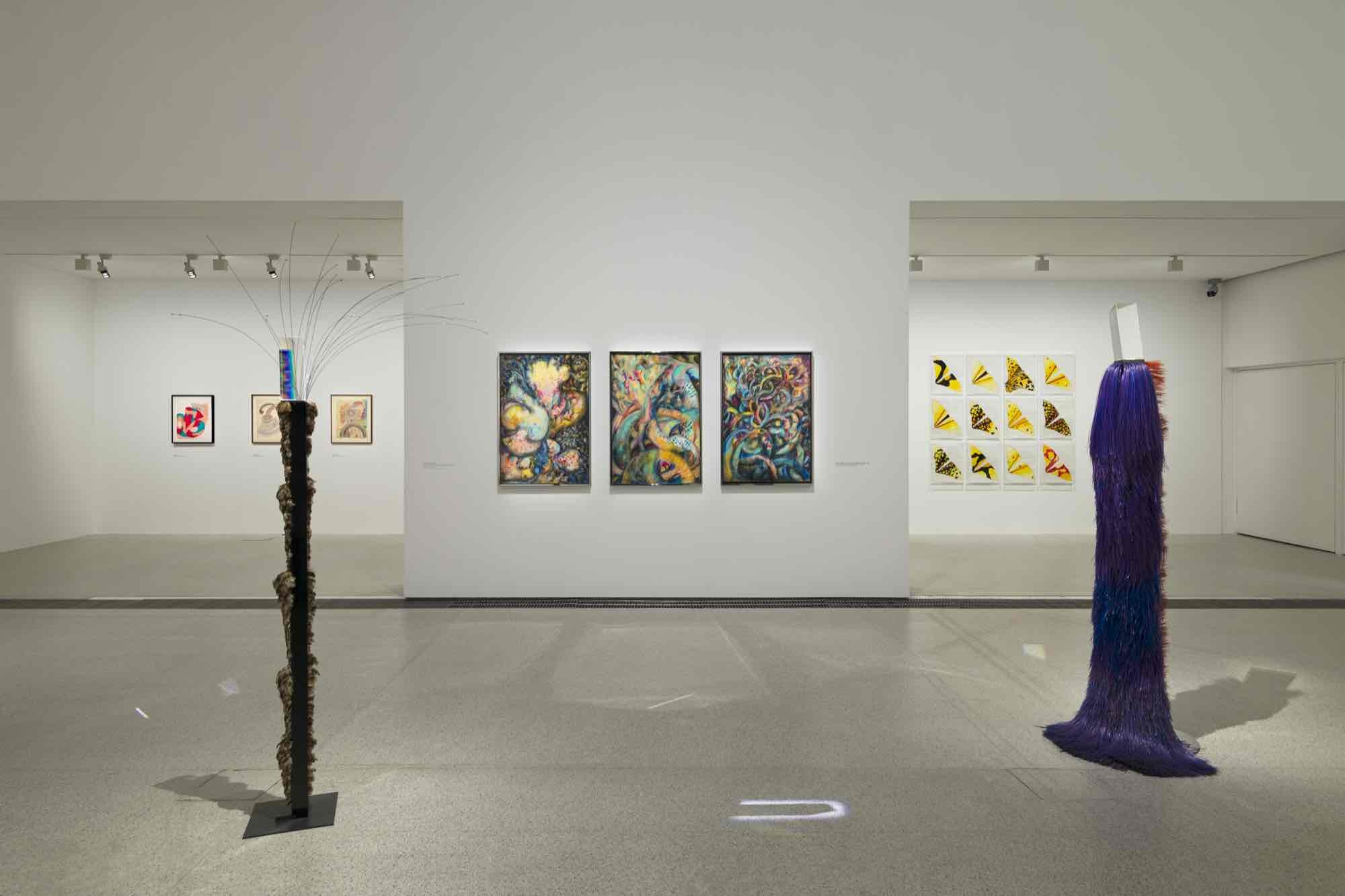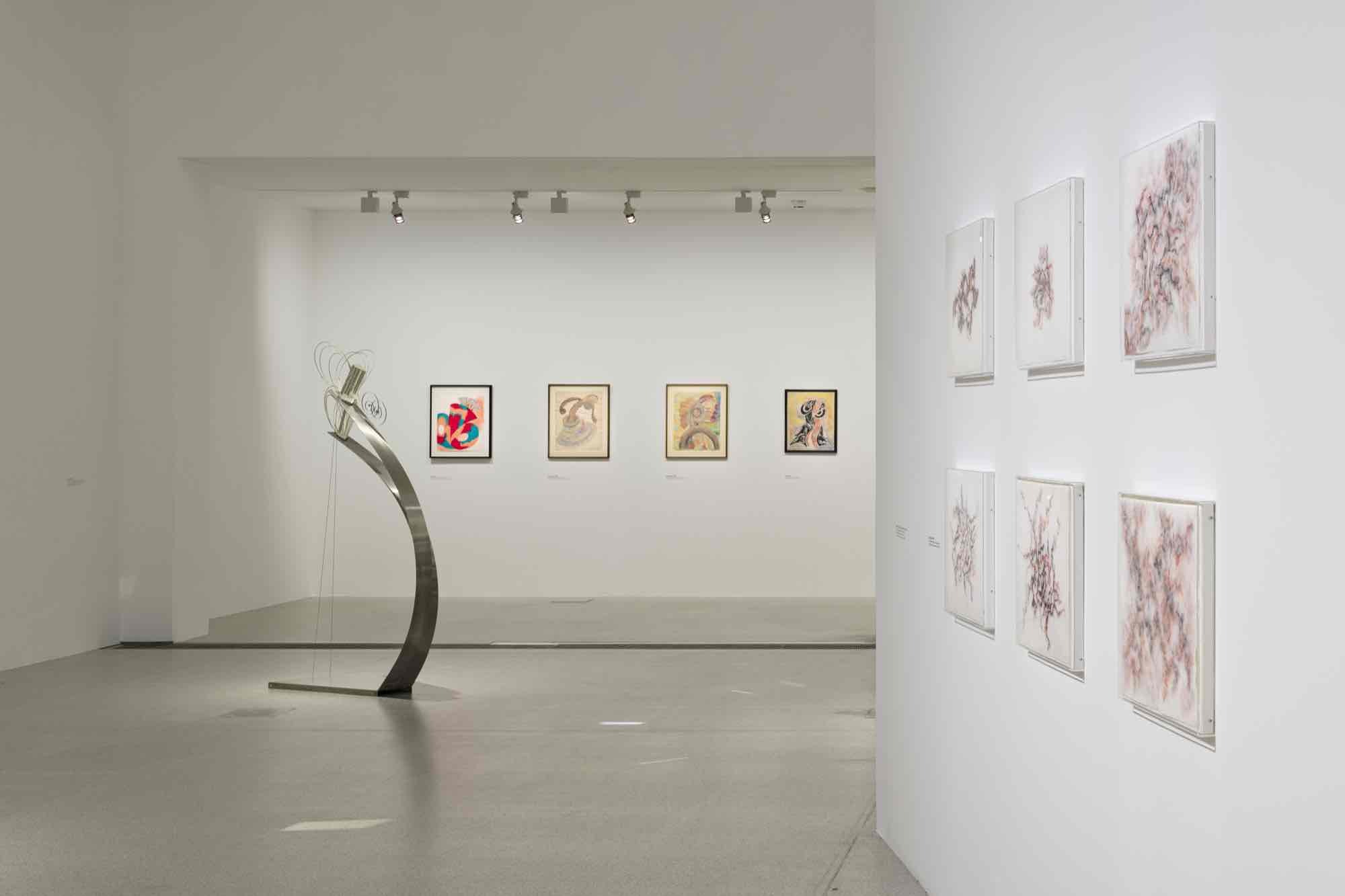Liliane Lijn
Arise Alive
15 Nov 2024 - 04 May 2025

Exhibition view: Liliane Lijn. Arise Alive, 15. November 2024 bis 4. Mai 2025 / November 15, 2024, to May 4, 2025. Photo: Georg Petermichl / mumok © Bildrecht, Wien 2024

Exhibition view: Liliane Lijn. Arise Alive, 15. November 2024 bis 4. Mai 2025 / November 15, 2024, to May 4, 2025. Photo: Georg Petermichl / mumok © Bildrecht, Wien 2024

Exhibition view: Liliane Lijn. Arise Alive, 15. November 2024 bis 4. Mai 2025 / November 15, 2024, to May 4, 2025. Photo: Georg Petermichl / mumok © Bildrecht, Wien 2024

Exhibition view: Liliane Lijn. Arise Alive, 15. November 2024 bis 4. Mai 2025 / November 15, 2024, to May 4, 2025. Photo: Georg Petermichl / mumok © Bildrecht, Wien 2024
Liliane Lijn. Arise Alive is the most comprehensive institutional solo presentation of the artist to date. Born in New York in 1939 and based in London since 1966, Lijn has been working at the interface of visual art, poetry, and science for more than six decades. She has created a multifaceted oeuvre that includes sculptures, installations, collages, paintings, videos, and performances. The exhibition showcases the most important stages in Lijn’s category-defying work from the late 1950s until today.
Serving as a starting point for Lijn’s multimedia practice are the kinetic art of the late 1950s as well as her exploration of Surrealist ideas, ancient mythology, and eastern philosophy. Her early works already manifest her interest in unconventional artistic materials—an interest that has thrived to this day. 1961 marked the first time Lijn used Perspex in her works, in which she experimented with reflections, movement, and light. “Electric lights flash on and off plexiglass constructions, creating a tangle of transparent shadows called Echo Lights by the artist,” writes the American poet John Ashbery in 1963 about her exhibition at the Galerie de la Librairie Anglaise in Paris.
Ashbery was equally impressed by the motorized language-based works. “Her Vibrographs are wheels revolving too fast for you to read the words printed on them, but perhaps they affect you unconsciously like subliminal advertising.” Akin to the linguistic experiments of the Beat poets, Lijn’s so-called Poem Machines strive to set words mechanically in motion to liberate them from their fixed meanings. The works mark the beginning of her exploration of language, which has continued to this day, with the idea of the spoken word as vibration and thus energy. “The main concern of my work has been and is ‘energy transfer.’”
Lijn’s works are often based on everyday observations—the behavior of waterdrops on a glass pane or the awareness that letters are made up of lines. Her works can be understood as experimental arrangements to get to the bottom of the principles of our cosmos. As the titles of her works demonstrate—Cosmic Flares I (1966), Act As Atom (1967-68), E=mc3 (1968)—Lijn has regarded technology and science as allies from the beginning to penetrate the regions that lie beyond visibility. She also understands this as a feminist project. For the artist, the dematerialization of language and body, their translation into vibration, light, and sound, mean an attack on patriarchal structures and the reduction of women to their bodies. “I was interested in dematerialization—the idea of losing the body. And that was related in a way to being a woman.”
One may also place Lijn’s book Crossing Map, published in 1983, in this context. More than fifteen years in the making, it paved the way for the multimedia sculptures of the 1980s. On a quest for new formats and forms of expression, Lijn started working on a prose text in the second half of the 1960s whose final version can be described as a hybrid between science-fiction, autobiography, and ecofeminist manifesto. This work of linguistic art, which she has also performed publicly, tells the story of the spiritual journey of an artist overcoming her material body.
At the same time, Lijn also focused her attention on the human figure in visual art to reflect on the effects of various technological advancements on the body. Using feather dusters, synthetic fibers, optical prisms, and lasers, she created futuristic female “deities” that seem to be part human, part animal, part plant. One of the highlights and the proverbial epicenter of the exhibition at mumok is the confrontation of Lady of the Wild Things (1983) and Woman of War (1986), which Lijn premiered at the Venice Biennale. At the time, they were aptly described as “goddesses of the Space Age.” Unfolding between the two outsized computercontrolled figures is a six-minute dialog that incorporates singing, 250 LEDs, laser, and artificial smoke. Lijn's interactive sculptures, subsumed under the term “cosmic dramas,” were inspired in part by modern-day power generating plants. In them, she relates the cosmic to the personal, mythology to high-tech, giving female archetypes a contemporary form.
Curated by Manuela Ammer
Serving as a starting point for Lijn’s multimedia practice are the kinetic art of the late 1950s as well as her exploration of Surrealist ideas, ancient mythology, and eastern philosophy. Her early works already manifest her interest in unconventional artistic materials—an interest that has thrived to this day. 1961 marked the first time Lijn used Perspex in her works, in which she experimented with reflections, movement, and light. “Electric lights flash on and off plexiglass constructions, creating a tangle of transparent shadows called Echo Lights by the artist,” writes the American poet John Ashbery in 1963 about her exhibition at the Galerie de la Librairie Anglaise in Paris.
Ashbery was equally impressed by the motorized language-based works. “Her Vibrographs are wheels revolving too fast for you to read the words printed on them, but perhaps they affect you unconsciously like subliminal advertising.” Akin to the linguistic experiments of the Beat poets, Lijn’s so-called Poem Machines strive to set words mechanically in motion to liberate them from their fixed meanings. The works mark the beginning of her exploration of language, which has continued to this day, with the idea of the spoken word as vibration and thus energy. “The main concern of my work has been and is ‘energy transfer.’”
Lijn’s works are often based on everyday observations—the behavior of waterdrops on a glass pane or the awareness that letters are made up of lines. Her works can be understood as experimental arrangements to get to the bottom of the principles of our cosmos. As the titles of her works demonstrate—Cosmic Flares I (1966), Act As Atom (1967-68), E=mc3 (1968)—Lijn has regarded technology and science as allies from the beginning to penetrate the regions that lie beyond visibility. She also understands this as a feminist project. For the artist, the dematerialization of language and body, their translation into vibration, light, and sound, mean an attack on patriarchal structures and the reduction of women to their bodies. “I was interested in dematerialization—the idea of losing the body. And that was related in a way to being a woman.”
One may also place Lijn’s book Crossing Map, published in 1983, in this context. More than fifteen years in the making, it paved the way for the multimedia sculptures of the 1980s. On a quest for new formats and forms of expression, Lijn started working on a prose text in the second half of the 1960s whose final version can be described as a hybrid between science-fiction, autobiography, and ecofeminist manifesto. This work of linguistic art, which she has also performed publicly, tells the story of the spiritual journey of an artist overcoming her material body.
At the same time, Lijn also focused her attention on the human figure in visual art to reflect on the effects of various technological advancements on the body. Using feather dusters, synthetic fibers, optical prisms, and lasers, she created futuristic female “deities” that seem to be part human, part animal, part plant. One of the highlights and the proverbial epicenter of the exhibition at mumok is the confrontation of Lady of the Wild Things (1983) and Woman of War (1986), which Lijn premiered at the Venice Biennale. At the time, they were aptly described as “goddesses of the Space Age.” Unfolding between the two outsized computercontrolled figures is a six-minute dialog that incorporates singing, 250 LEDs, laser, and artificial smoke. Lijn's interactive sculptures, subsumed under the term “cosmic dramas,” were inspired in part by modern-day power generating plants. In them, she relates the cosmic to the personal, mythology to high-tech, giving female archetypes a contemporary form.
Curated by Manuela Ammer
